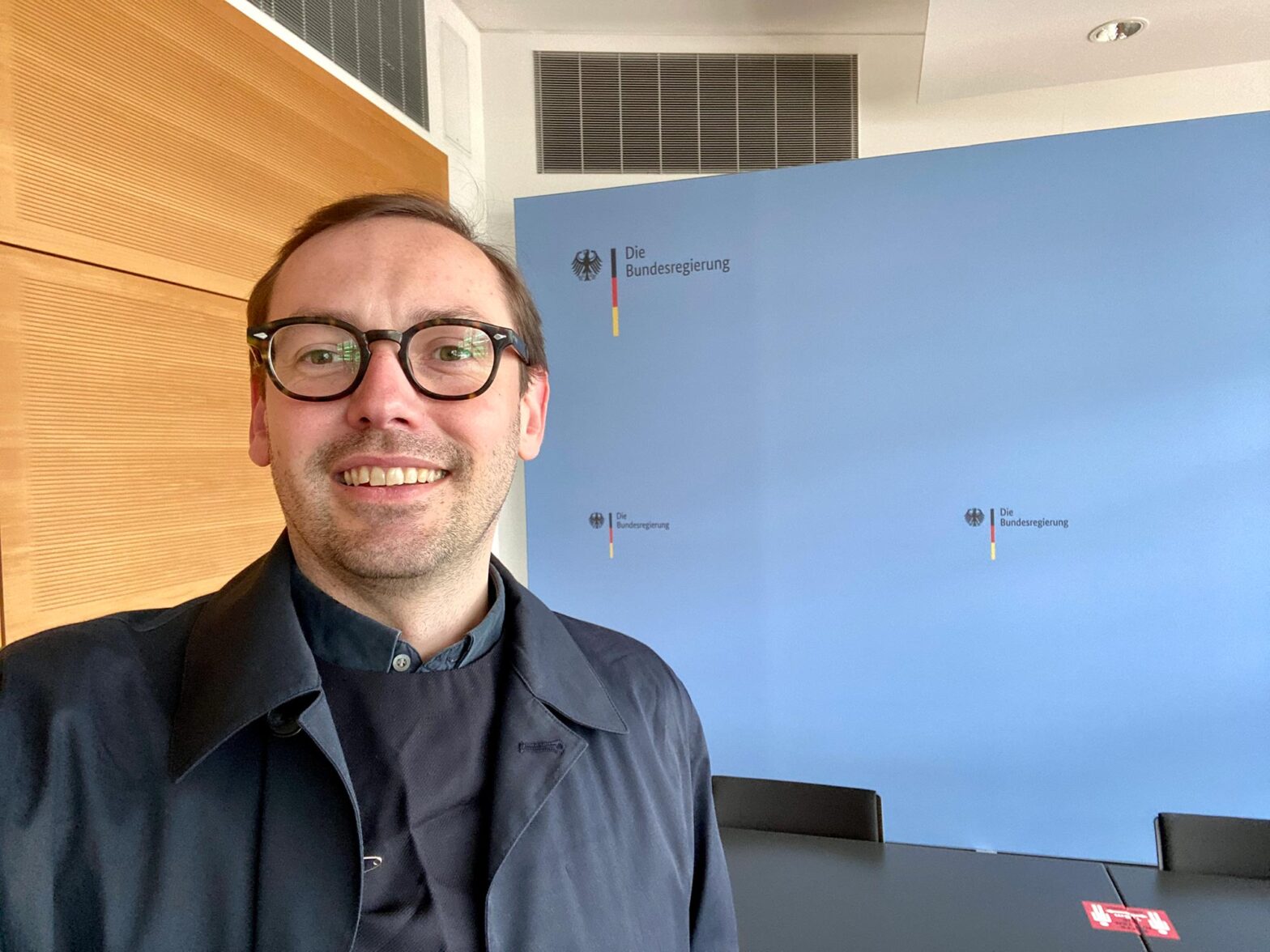After 2.5 weeks, I made it out of the building. I visited the Federal Press and Information Office, which, among other things, looks after the brand of the Federal government and its ministries in Germany and the related style guide. They have a rather impressive office in the central government district. While they don’t have an entire design team in-house, some have been working as designers in senior positions in consultancies before, so they are more than just brand managers. They have a deep understanding of the material they are dealing with. We discussed how the various brands are documented and managed in a dynamic digital landscape. The team is also responsible for some web components as part of their work. We discussed how our work on additional components could feed into theirs.
Learning about work and language
This week, I continued with my designer 1:1 sessions. Even though I’m not line-managing everyone – the senior designers are the people managers of the mid-level designers – I like to have these sessions with a reasonable frequency. That is not something I have seen happening in the organisations I have worked at before, but it’s vital to stay closely in touch with all the work and the people doing it. I hope to establish an understanding that my door (aka calendar, Slack message, etc.) is always open.
I also had the opportunity to learn about 2 larger projects in more detail, going through journeys and flows to get an idea of the work.
Every Monday, designers and occasionally a few developers from different projects share their progress on components while contributing to an internal component library. This week, they looked at error messages, their styles and behaviours. In another cross-government call, I learned about another component library developed by the Federal Information Technology Centre (ITZBund).
And while speaking to a user-centred minded person at state government level, I got a better understanding of how the German service standard plays a minor role in developing digital services mandated by the ‘online access law’. As the standard had been written by a Federal ministry with little to no upfront consultation of state and local government, where most services are developed and delivered, it’s not something that’s being considered in the creation process. As they weren’t asked before, it’s nothing for them now either. That’s a missed opportunity because the service standard is good and can be a helpful building block to increase quality of services.
After listening to colleagues for a couple of weeks, I recognised some linguistic quirks. For example, certain verbs have prefixes that I had not heard before. So I took it to Twitter and got some curious responses.
Last-minute, I got an empty slot for a 2-part unconscious bias training, created and run by Invisible Berlin. This part covered awareness, our language, and what potential harm we do and don’t even know.
Talking internationally again
GDS’s Paloma Jain, my partner-in-crime for the International Design in Government community, and I had a check-in call. We are looking forward to next week’s 27th community call.
We are back in a monthly rhythm for the format and have a diverse list of topics. What we need, though, is fewer speakers from the Global North and more from the Global South.
Using my calendar link on the Mega Mentor website, 2 people booked time to talk to me: One American person who worked in the Biden administration and a British service designer working at a junior level in local government. I’m glad I can stay in touch with people worldwide to keep a global perspective. And according to the feedback, I’m able to answer these people’s questions, too.
Being social with designers, pizza and accessibility errors
Our designer Paul organised a social evening event for the design team – with pizza and long chats in a neighbourhood restaurant until late. Having started during the pandemic, not everyone in the team had met in person yet. For some it was the first time they didn’t talk with computer screens between them. We hope to have more of these encounters later this summer as it’s an excellent opportunity to get to know the people beyond the work.
More work-focused, designer Nadine organised a pizza-powered accessibility check for Friday late afternoon. In a group of 8, including developers, product and growth managers, plus a third of the design team, we reviewed and tested our newly launched website for accessibility and compliance with the web content accessibility guidelines (WCAG 2.1). We enjoyed bug busting and instantly documenting our findings – and immediately committed to rerunning this format. If that happens, this activity deserves a sticker for participating colleagues. In the meantime, we will make sure the found issues will be addressed shortly.
Right after, I attended the Berlin product designers’ gathering. It’s been quite a while since I participated in a meetup in person.
I went there to re-connect with the Berlin design scene, see what the work around sustainable design is here like, and understand how we might take over a slot and talk about public sector design in a future event.
What’s next
I missed this year’s Code for America Summit almost entirely. The time difference did not help. I hope I can catch up on some recorded content.
After joining the Civic Design conference’s call for submissions, we also have to work on some proposals due by the end of the month. It would be helpful to make our team’s work visible internationally and talk about it.

